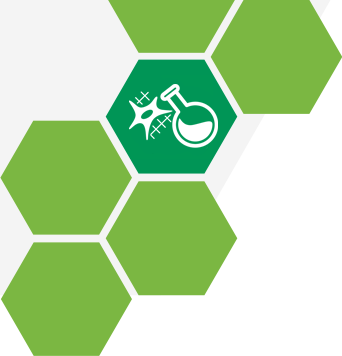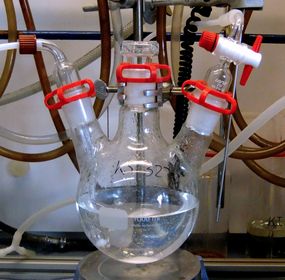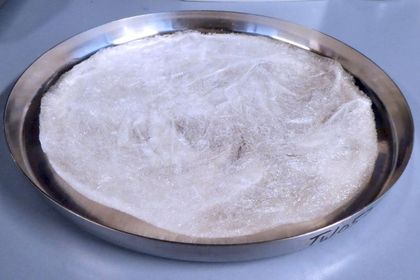Gycosaminoglycans (GAG) are linear, complex polysaccharides consisting of repeating disaccharide units. They form a main component of the extracellular matrix, are found in connective tissue and cartilage, and act as water storage in the vitreous body of the eye (hyaluronic acid). Sulfated GAGs, such as chondroitin sulfate or heparin, also exhibit a high degree of biological activity (e.g. antiviral, anticoagulant), and enter into a variety of interactions with certain mediators (e.g. growth factors). This corresponding activity depends strongly on the degree or pattern of substitution.
We have been working for years on the derivatization of GAGs in order to specifically modify their chemical-physical, and especially biomedical properties. One focus of our work is on regioselective sulfation, especially of hyaluronic acid, the only non-sulfated natural GAG. We have successfully established synthesis processes for the production of sulfated hyaluronic acid derivatives, in which products with selectively adjustable sulfation levels and different sulfation patterns are obtained, depending on the reaction conditions. The hyaluronic acid sulfates obtained are non-toxic, have an anticoagulant effect, and show a high level of antiviral activity against Herpes Simplex Virus Type I.
A decisive factor for both the physical and biological properties of GAGs is their chain length. In our department, we successfully perform different methods for the selective degradation (thermal, enzymatic, ozonolysis) of high molecular weight GAGs. This enables us to obtain shorter chain or oligomeric degradation products with defined molecular weight, and a narrow molecular weight distribution.
Further GAG functionalizations concern the introduction of carboxymethyl or amino groups into the GAG structures, as well as the binding of marker molecules (biotin, fluorescent markers), both to functional groups within the polymer backbone, and to the polymer end groups. By introducing cross-linking groups, we are also able to provide GAG-hydrogels.
In-depth studies on the cell biological properties of functionalized GAGs, such as selective and efficient interaction with growth factors and interleukins, are currently being conducted. These studies are primarily taking place within the framework of the DFG-funded Collaborative Research Center Transregio 67, in which we are involved in 2 subprojects.
We would be pleased to take over your custom synthesis. Detailed information about the synthesizable compounds can be found here.
Dr. Stephanie Möller
e-mail
Phone: +49 3641 282555






